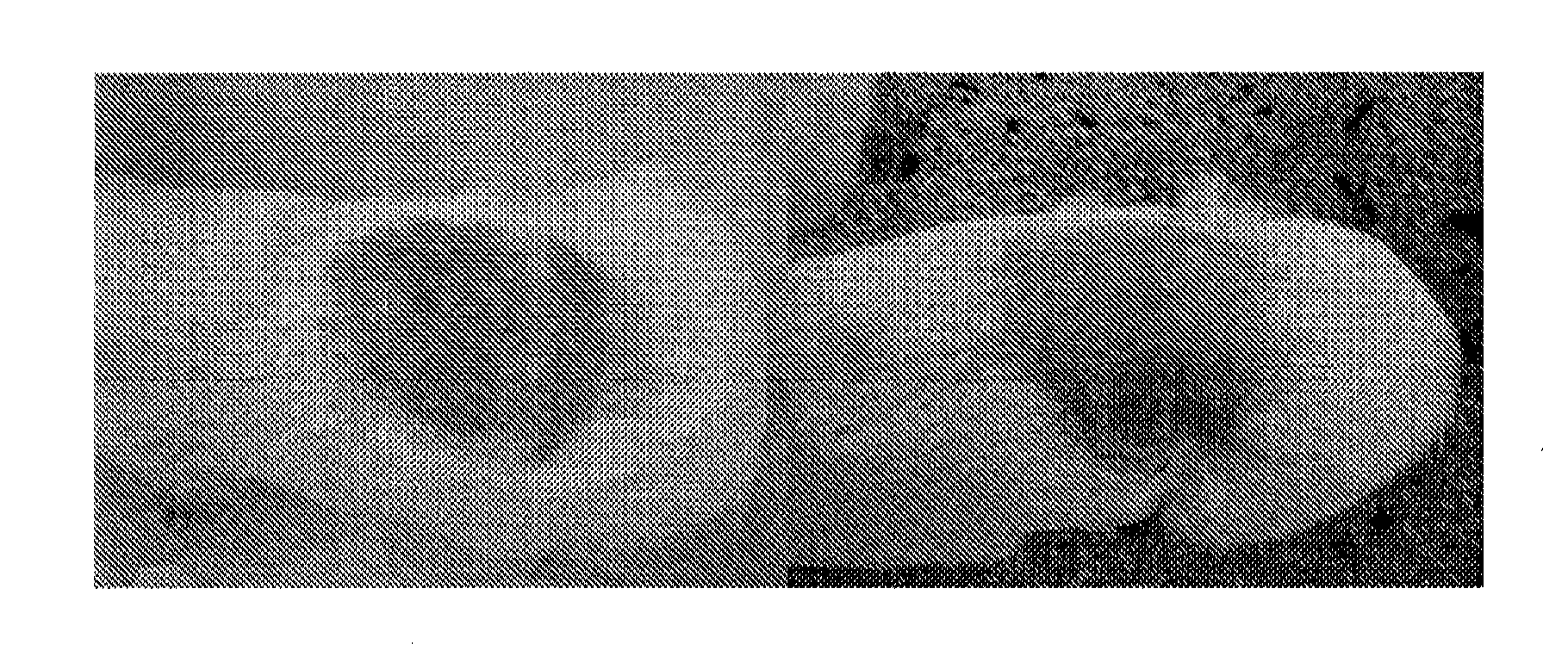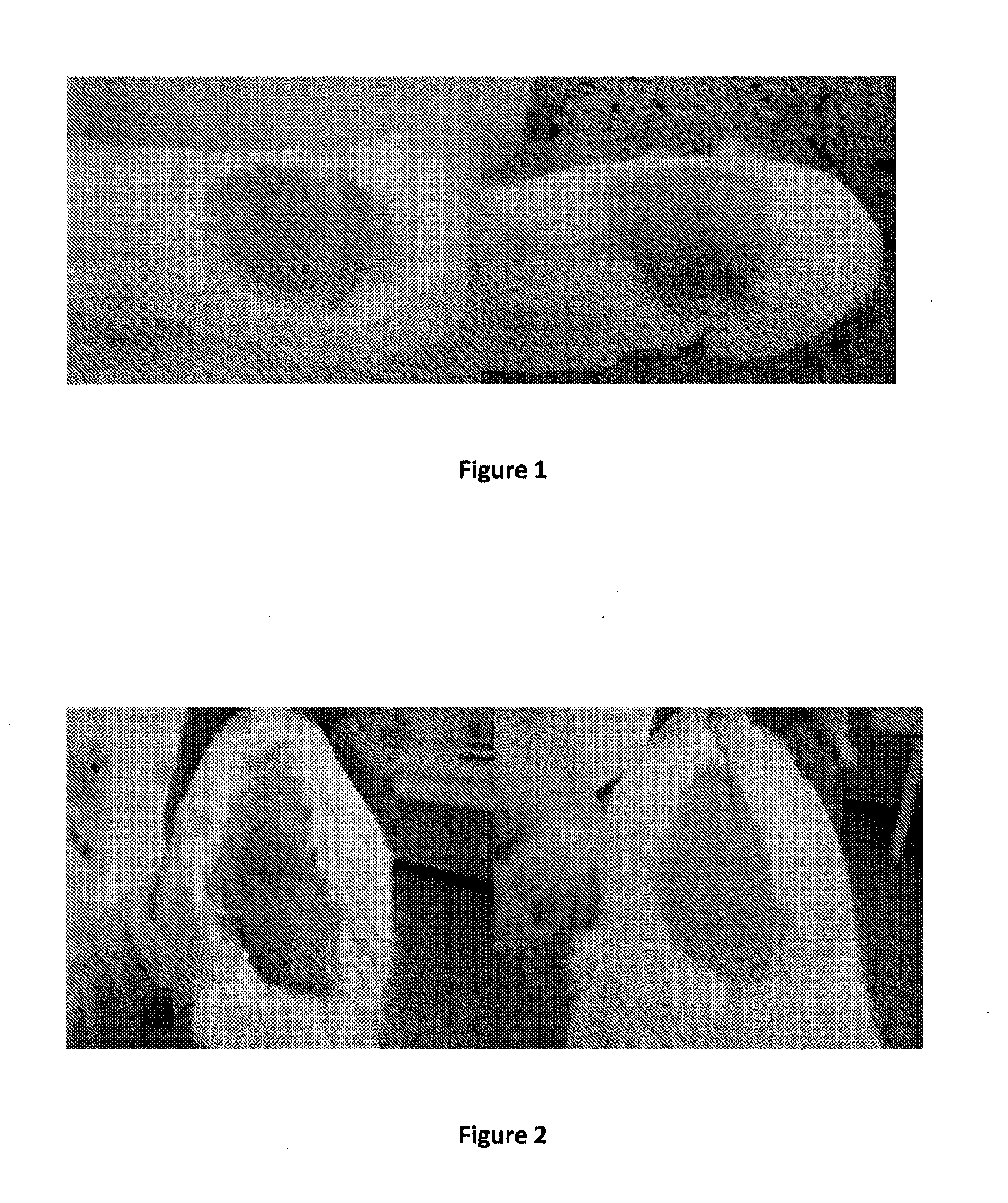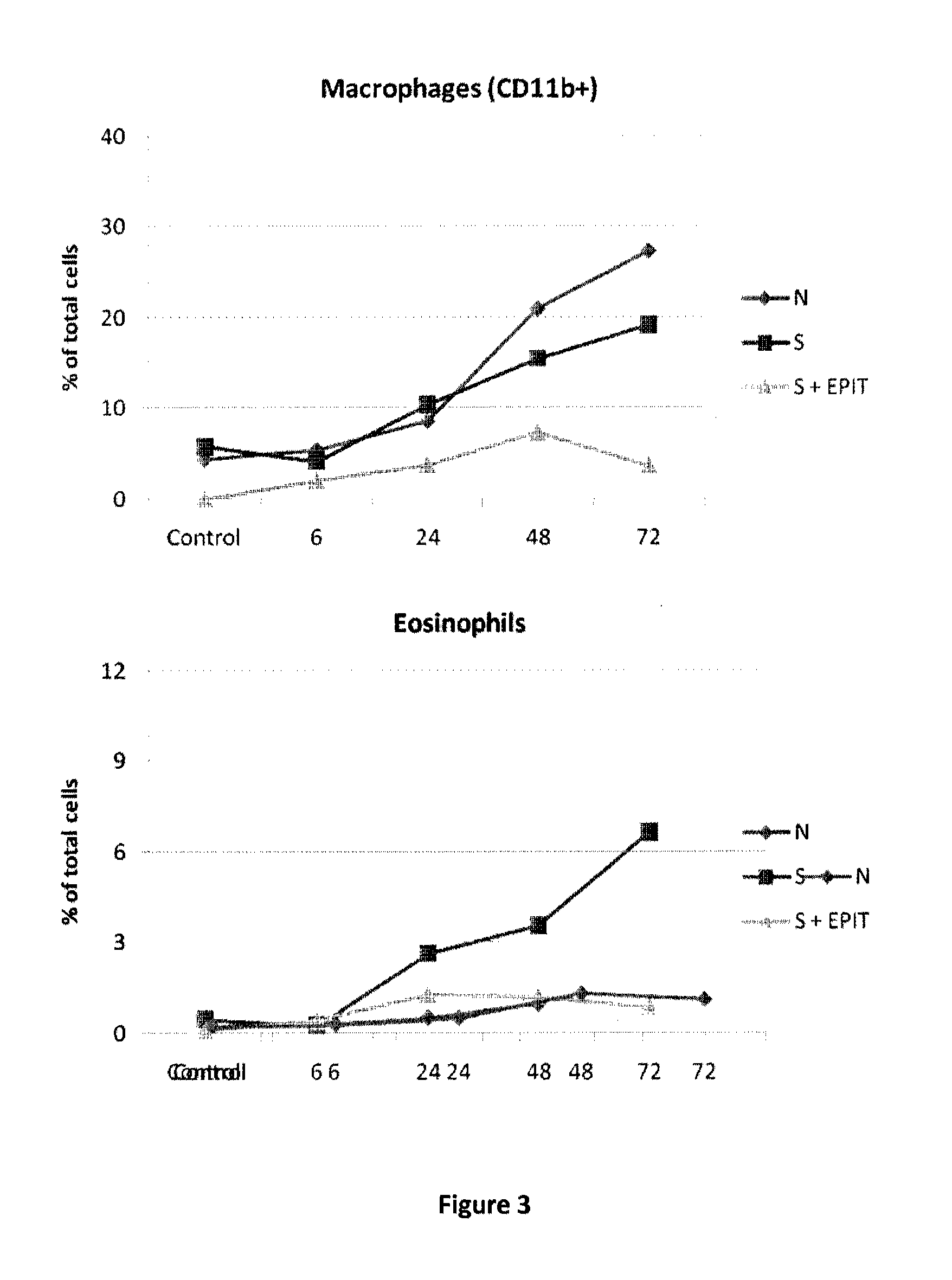Method of treating eczema
a technology for eczema and skin, applied in the field of eczema treatment, can solve the problems of abnormal skin reaction and easy reactivity of the skin of the patient with atopic dermatitis, and become vulnerable to surface infections, and achieve the effect of efficient immunotherapy and reduced skin reactivity of the subj
- Summary
- Abstract
- Description
- Claims
- Application Information
AI Technical Summary
Benefits of technology
Problems solved by technology
Method used
Image
Examples
example 1
[0088]In an experiment on Guinea pigs sensitized to peanut proteins, the 48 h application on the back of the animal of 100 μg of peanut protein extracts (PPE) is responsible of skin lesions from the first application of PPE. These lesions (FIG. 1) are typically local eczema lesions with edema, erythema and vesicles. Histologically, there is a wide inflammation with macrophages and lymphocytes. Eosinophils are also noticed. During the course of the treatment, level of local reactivity decreases progressively and was completely vanished, after 3 weeks of treatment. Skin reactivity to PPE decreased dramatically in the subcutaneous tissues.
[0089]Moreover, after 3 months of treatment, atopy patch test with cow milk proteins applied on another skin area (stomach) did not provoked any reactions while, in sensitized untreated animals, a local eczematous reaction has been noticed (FIG. 2).
example 2
[0090]This local eczematous reaction phenomenon has also been found in a model Balb / c mice sensitized to ovalbumin (OVA) (FIG. 3). In this trial, two groups of sensitized mice (one treated by weekly application of Viaskin with OVA, one sensitized and not treated) were compared to a control group of non treated and non sensitized mice. After 8 weeks, an atopy patch test with OVA conjugated to fluorochrome was applied on the back during 48 h. When epiderm and derm are studied, the concentration of macrophages of eosinophils fixing labeled OVA was dramatically decreased in treated animals comparing to sensitized but non treated. Thus, in this experiment histological changes are in accordance to clinical findings. Thus, OVA-sensitized mice treated by EPIT loose all reactivity to OVA during patch testing.
example 3
[0091]In a pilot study undertaken in cow's milk allergic children, the decrease of skin reactivity to milk during patch testing have been observed. In this trial, 16 children were included. All of them suffered from a severe cow's milk allergy with high level of specific IgE in the serum. Treatment consisted of the application for 48 hours of 1 EPIT device (Viaskin® DBV Technologies SA, Pepini{acute over (ε)} re Paris Sante Cochin, Paris, France), 3 times a week, on the back, for the whole duration of the study (i.e. 3 months).
The device, equipped with the 1 mg of cow's milk, was placed in the back of the child, without any specific preparation of the skin, in 6 places previously defined in the inter-scapular area, following a clockwise order. They were maintained for 48 hours before being removed by the parents. Once applied on the skin, the device containing the milk triggers a local eczematous reaction, in the form of redness visible from the 3rd hour following application throug...
PUM
| Property | Measurement | Unit |
|---|---|---|
| size | aaaaa | aaaaa |
| height | aaaaa | aaaaa |
| area | aaaaa | aaaaa |
Abstract
Description
Claims
Application Information
 Login to View More
Login to View More - R&D
- Intellectual Property
- Life Sciences
- Materials
- Tech Scout
- Unparalleled Data Quality
- Higher Quality Content
- 60% Fewer Hallucinations
Browse by: Latest US Patents, China's latest patents, Technical Efficacy Thesaurus, Application Domain, Technology Topic, Popular Technical Reports.
© 2025 PatSnap. All rights reserved.Legal|Privacy policy|Modern Slavery Act Transparency Statement|Sitemap|About US| Contact US: help@patsnap.com



